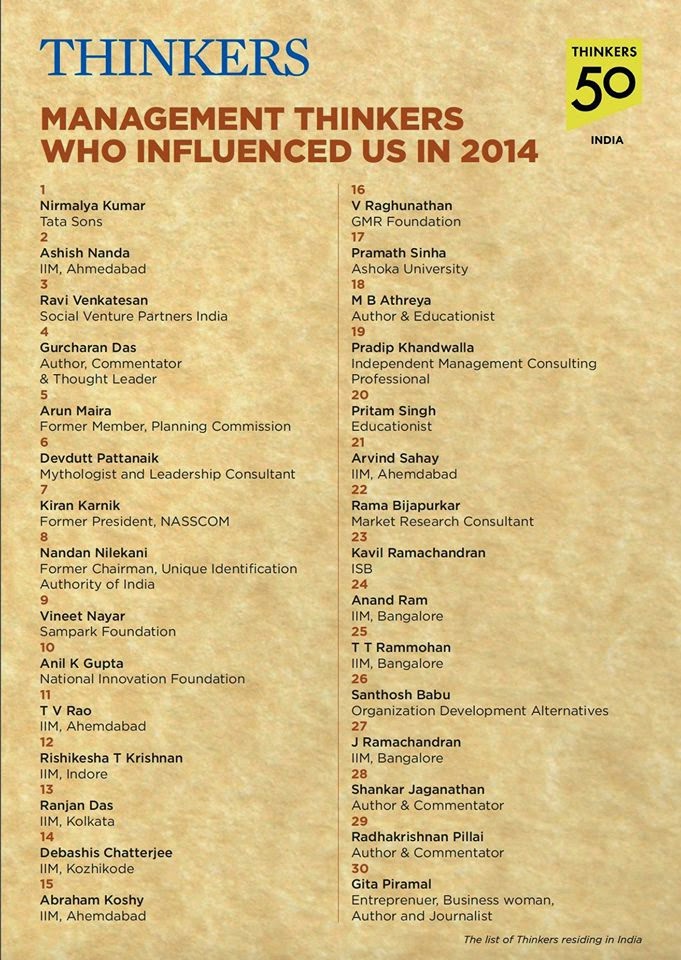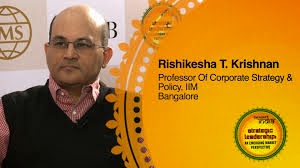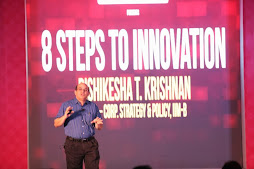This was the theme of the 7th India Innovation Summit organised by CII at the Leela Palace on September 8-9. Speakers represented the best that the city has to offer on the innovation front – multinational R&D centres of GE, Intel, Yahoo, IBM and 3M; successful start-ups like Tejas Networks, Teleradiology Solutions and Vaatsalya Hospitals; and home-grown innovation pioneers such as Infosys, Biocon & Avesthagen.
I had the privilege of chairing the session on Higher Education & Research. Bangalore has the long had prestigious research institutions like the Indian Institute of Science and several Defence R&D laboratories. But it’s a new generation of relatively young institutions that has the potential to change the innovation landscape of Bangalore. Three of these institutions were represented on our panel.
The National Centre for Biological Sciences (NCBS) of the Tata Institute of Fundamental Research is arguably India’s leading centre for biological research. NCBS is now hosting a new Stem Cell Research Institute supported by the Department of Biotechnology.
The Azim Premji University (APU) and the Azim Premji Foundation (APF) have a clear mission – to transform primary education in the country by enhancing the quality of schools.
Srishti Labs, a part of the Srishti School of Design, beings together a design education institution and technology professionals to provide practical and aesthetic solutions.
Each of these institutions fills an important gap in the innovation portfolio of the city. But what was most impressive was the vision and clarity of purpose of their three leaders.
Warren Greving of Srishti Labs emphasized the importance of combining the divergent thinking of creative individuals at the Design School with the convergent thinking of industrial problem-solving. This is what Srishti Labs seeks to achieve.
K. VijayRaghavan of NCBS placed his institute in the context of the growth of Indian science. The British never intended the growth of science in India, and the early scientific leaders – Satyen Bose, JC Bose, Ramanujam, Raman and Meghnad Saha – were accidental geniuses, not the result of deliberate institutional outcomes. India climbed on the Science bandwagon after independence and set up a whole range of new institutions. But these institutions tended to stagnate unless propelled by visionary leadership. Again, success was inspite of, rather than because of, the system. Today, we are entering a new phase of institution building. The people attracted to these institutions have been trained at the best institutions in the world, and now its up to the new Indian institutions to help them achieve non-linear results.
Anurag Behar of APF and APU outlined some of the barriers that hold back Indian primary education. While we have thousands of schools and teachers, we have not created the education support infrastructure – experts in content, pedagogy, and delivery – that can help the school system deliver effectively. This is the gap that the two Azim Premji institutions seeks to close. Since we have a lag in this area, we often don’t have the resources readily available, and the challenge is to scale up through internal capacity development. A critical element of the APF philosophy is that the concepts and practice have to work closely together – all ideas have to be tried out in the field, not just restricted to academic writing.
All three speakers were unanimous in underlining the importance of integrity of purpose in building strong institutions - there can be no compromise on the core mission of the organization. They emphasized the importance of carrying people with them, and infusing a sense of purpose to overcome barriers. They felt that team work was imperative to achieve excellence, and to meet the high bar placed by international competition and societal expectations.
Let’s hope we see more such institutions emanating from Bangalore in the years to come! And watch the achievements of NCBS, Srishti Labs, and the APF/APU closely… these could be the institutions that move us closer to being the Innovation Hub of Asia!














